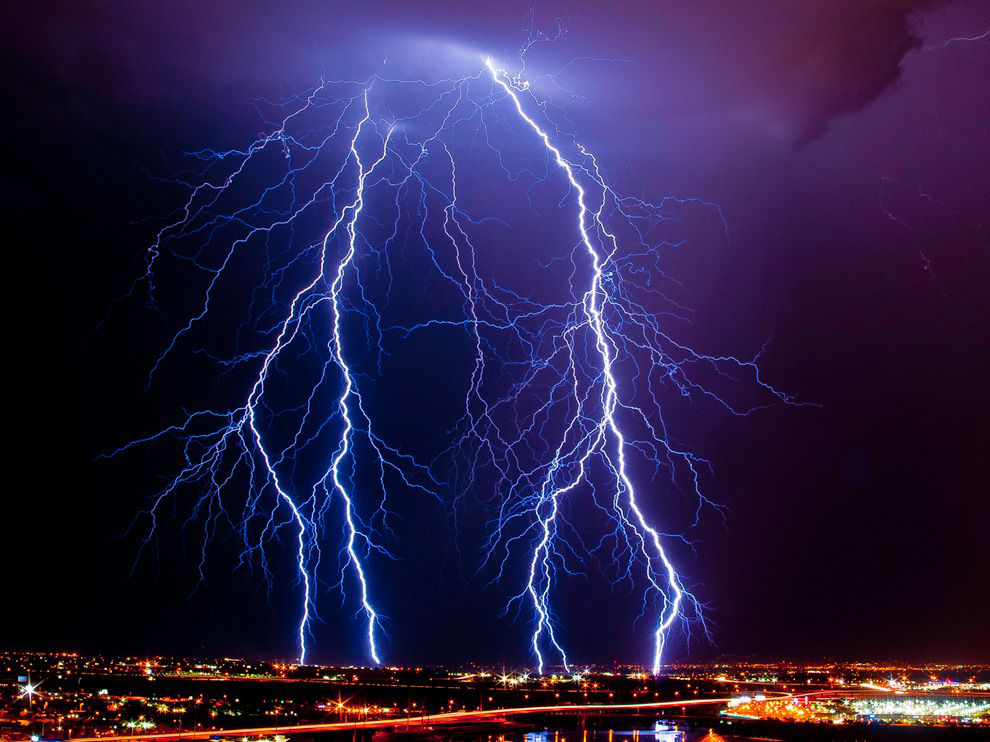Lightning
Do you want to know more?
Lightning
During any given minute, there are more than a thousand thunderstorms around the Earth causing some 6,000 flashes of lightning. Every minute! Thunderstorms are caused by rapidly rising and falling currents of air. The friction from this moving air creates electrical charges within a cloud. Water droplets and ice pellets fall, carrying charged electrons to the lower portion of the cloud, where a negative charge builds. A positive charge builds up near the top of a cloud. Most of the electrical energy in a thunderstorm is dissipated within the clouds, as lightning hops between the positively and negatively charged areas. Lightning becomes dangerous, though, when it reaches for the Earth.
How lightning strikes
When the negative charge in the cloud becomes great enough, it seeks an easy path to the positively charged ground below. The current looks for a good conductor of electricity, or a tall structure anchored to the ground (such as a tree or a tall building). The negative charge sends out a feeler, called a stepped leader, which is a series of invisible steps of negative charges.
As the stepped leader nears the ground, a positive streamer reaches up for it. Only then, once this channel is made, does the visible lightning happen. A return stroke runs from the ground to the clouds in a spectacular flash.
Though the bolt appears continuous, it is actually a series of short bursts. Most lightning strikes occur in less than a half second and the bolt is usually less than 2 inches in diameter.



